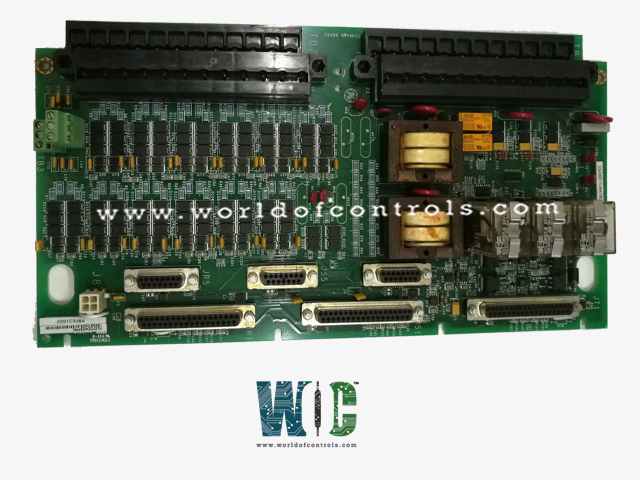SPECIFICATIONS
Part No.: IS200TTURH1BDC
Manufacturer: General Electric
Country of Manufacture: United States of America (USA)
Size 33.0 cm high x 17.8 cm wide (13 in. x 7 in.)
Technology Surface mount
Temperature Operating: -30 to 65oC (-22 to 149 oF)
Power supply voltage: Nominal 125 V dc to breaker coil
MPU pulse rate range: 2 Hz to 20 kHz
Product Type: Primary Turbine Protection Input terminal board
Availability: In Stock
Series: Mark VI
Functional Description
IS200TTURH1BDC is a primary turbine protection input terminal board developed by GE. It is a part of Mark VI control system. The Primary Turbine Protection Input terminal board is integral to the operation of the VTUR and is responsible for handling various inputs and outputs essential for the turbine's performance and protection.
Features
- Twelve Passive Pulse Rate Devices: These devices sense a toothed wheel to accurately measure the turbine speed. The passive nature of these devices ensures minimal interference and accurate speed detection.
- Generator Voltage and Bus Voltage Signals: These signals are received from potential transformers. They provide vital information about the voltage levels of the generator and the electrical bus, which are crucial for maintaining stability and synchronizing operations.
- Breaker Coil Control: The 125 V DC output is directed to the main breaker coil, facilitating automatic generator synchronization. Proper synchronization is essential to connecting the generator to the grid without causing disruptions or damage.
- Inputs from Shaft Voltage and Current Sensors: These sensors measure the induced voltage and current on the turbine shaft. Monitoring these parameters helps in detecting any anomalies that could indicate mechanical or electrical issues, thereby protecting the turbine from potential damage.
- Relay Operations and Connectivity: Relays K25, K25P, and K25A - All three relays must close to provide the necessary 125 V DC power to close the main breaker, 52G. This redundancy ensures that the breaker will only close under safe and confirmed conditions, enhancing the protection mechanisms for the turbine.
- Speed Signal Cable to VTUR: The JR5 connector is specifically designated for routing the speed signal cable to the VTUR, ensuring a reliable connection for speed measurement data.
- Utilize the JR1 Connector: This connector is used for routing other essential signals, consolidating various inputs to maintain a streamlined and organized system.
Installation
- Connect the wires for the magnetic pickups, shaft pickups, potential transformers, and breaker relays to the two I/O terminal blocks, TB1 and TB2. Each terminal block is secured with two screws and has 24 terminals, each capable of accepting wires up to 12 AWG. A shield termination strip, attached to the chassis ground, is located immediately to the left of each terminal block. This strip provides an effective grounding point for shielding purposes.
- Use jumpers JP1 and JP2 to select either Single Module Redundancy (SMX) or Triple Modular Redundancy (TMR) for relay drivers K25 and K25P. Ensure the jumpers are set correctly according to the redundancy requirements of your system. This selection is crucial for the correct operation of the relay drivers and the overall protection system.
- If optional TTL active speed pickups are used, connect their wires to terminal block TB3. These pickups require an external power supply, so make sure the external power supply is connected appropriately. Following these steps ensures that the terminal board is installed correctly, with all necessary connections made securely and with the correct redundancy settings, ensuring reliable operation of the turbine protection and control system.
The WOC team is always available to help you with your Mark VI requirements. For more information, please contact WOC.
Frequently Asked Questions
What is IS200TTURH1BDC?
It is a primary turbine protection input terminal board developed by GE under the Mark VI series.
Where do I connect the wires for the magnetic and shaft pickups?
The wires for the magnetic and shaft pickups should be connected to the two I/O terminal blocks, TB1 and TB2, as specified in the installation instructions.
How are the terminal blocks TB1 and TB2 secured?
Each terminal block, TB1 and TB2, is secured with two screws to ensure stability and reliable connections.
What type of wires can be connected to TB1 and TB2?
The terminal blocks TB1 and TB2 have 24 terminals each, capable of accepting wires up to 12 AWG.
